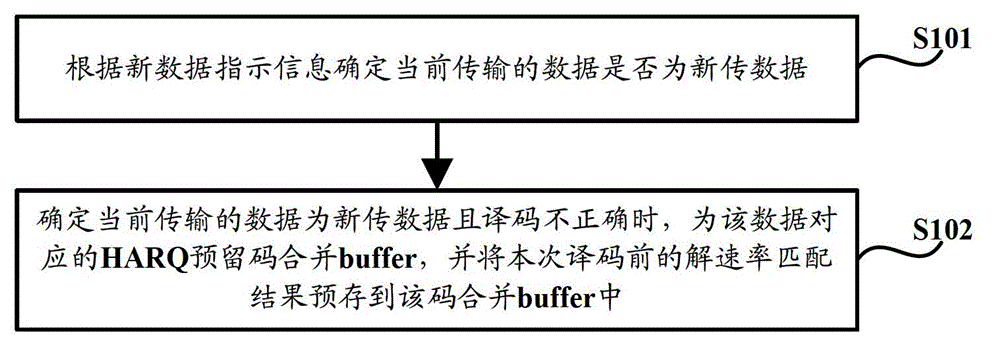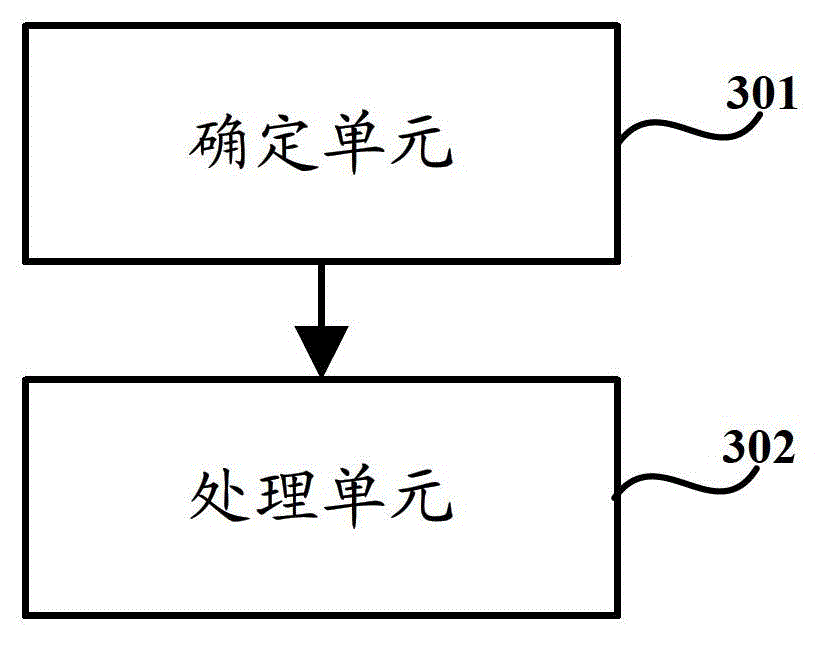Code merging buffer allocation method and device
A buffer allocation and buffering technology, applied in the field of communication, can solve the problems of reducing the actual gain of HARQ characteristics, predicting the combination of retransmissions, and not guaranteeing the HARQ process.
- Summary
- Abstract
- Description
- Claims
- Application Information
AI Technical Summary
Problems solved by technology
Method used
Image
Examples
Embodiment Construction
[0019] Embodiments of the present invention provide a method and device for allocating a code combining buffer. When it is determined that the currently transmitted data is newly transmitted data and the decoding is incorrect, the HARQ reserved code combining buffer is requested for the HARQ corresponding to the data. And the de-rate matching result before this decoding is pre-stored in the code combining buffer, which realizes the reasonable use of the code combining buffer and improves the actual gain of the HARQ feature.
[0020] Such as figure 1 As shown, the code merging buffer allocation method provided by the embodiment of the present invention includes:
[0021] Step S101. Determine whether the currently transmitted data is newly transmitted data according to the new data indication information;
[0022] Step S102, when it is determined that the currently transmitted data is newly transmitted data and the decoding is incorrect, reserve the code merging buffer for the ...
PUM
 Login to View More
Login to View More Abstract
Description
Claims
Application Information
 Login to View More
Login to View More - R&D Engineer
- R&D Manager
- IP Professional
- Industry Leading Data Capabilities
- Powerful AI technology
- Patent DNA Extraction
Browse by: Latest US Patents, China's latest patents, Technical Efficacy Thesaurus, Application Domain, Technology Topic, Popular Technical Reports.
© 2024 PatSnap. All rights reserved.Legal|Privacy policy|Modern Slavery Act Transparency Statement|Sitemap|About US| Contact US: help@patsnap.com










